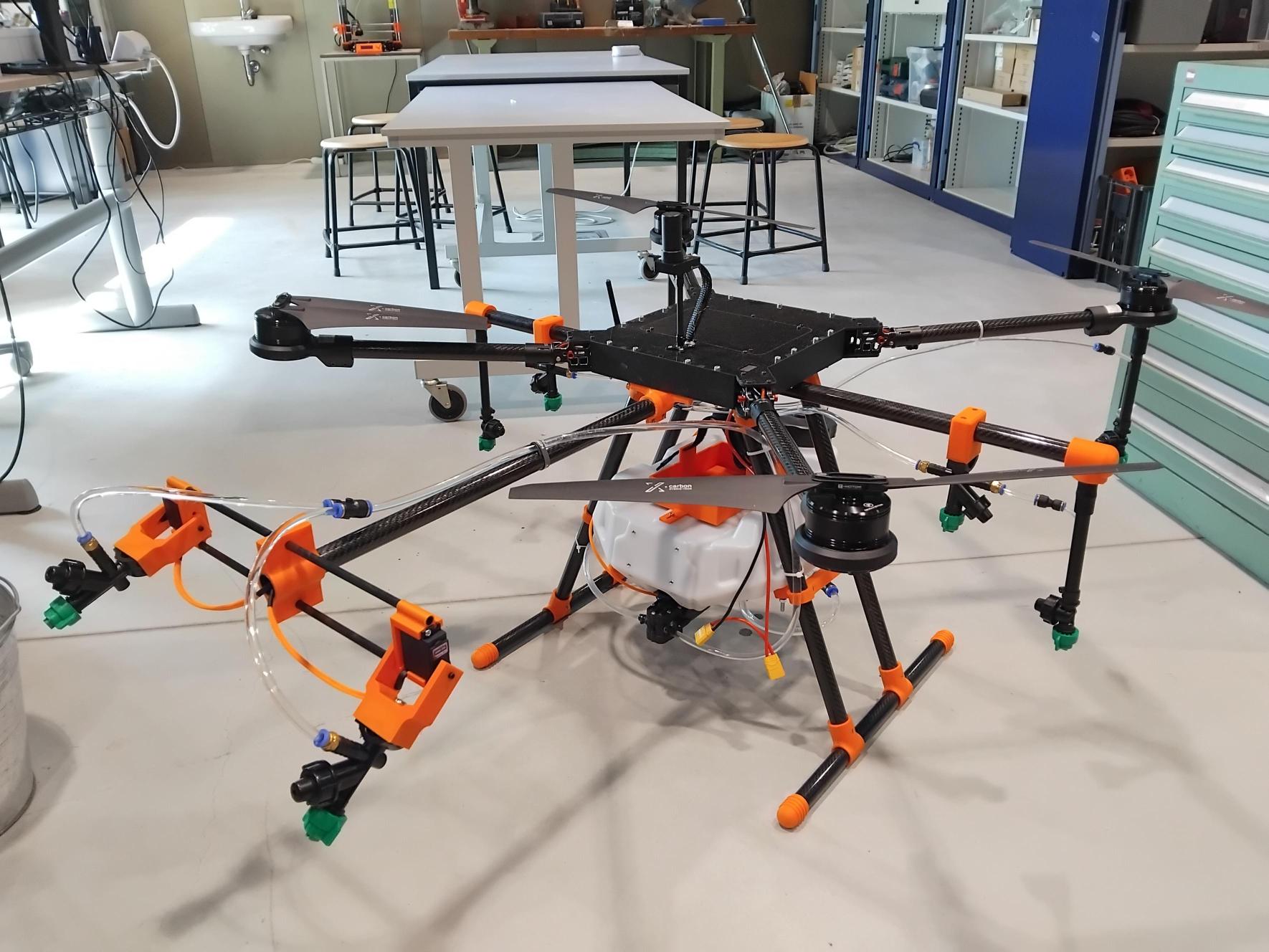Agri-drone for the autonomous spraying in the field
Fertilisers and pesticides represent one of the biggest sources of pollution generated by intensive agriculture. The main problems lie in the wat these compounds are sprayed over large crop areas. Large machineries with limited intelligent automation are commonly used for these tasks. With these tools, the same amount of pesticide is normally sprayed over large crops without detecting (and treating) the regions more in need of a treatment: this leads to an increase in pollution with larger costs. Drones coupled with perception systems could largely improve these issues, allowing a more targeted detection of problems (e.g. need for fertilisers, water stress or pests) with dedicated camera systems and a punctual spraying to increase the efficiency of the use of these products in the field.
This thesis will tackle this challenge, proposing to move some steps ahead in the development of the already existing UT Agri-drone platform. In particular the focus will be on the development of a system to detect the target (i.e. area to spray), replan the route to get closer to that area and to command the robotic nozzles of the platform to efficiently spray the area.

The MSc thesis work will foresee both a simulation and experimental (using the actual drone) tests. Two objectives can be preliminarily defined:
1) Detection of a target area and re-planning of the flight to get closer to the area of interest and further analyse the problem. Dor this
2) Direct the nozzles in the area to spray and spraying. The drone will control the servos of the nozzles to point them in the direction of the area. During the spraying it will make sure that the area of interest will be completely sprayed by the drone.
In step 1) local path planning algorithms will be explored to define the best (and safest) trajectory to follow for the drone. Step 2) will combine (i) semantic segmentation algorithms to detect the area, (ii) 3D computer vision algorithms to define the direction of the nozzles and (iii) drone control to move drone and nozzles to spray the area of interest efficiently.

